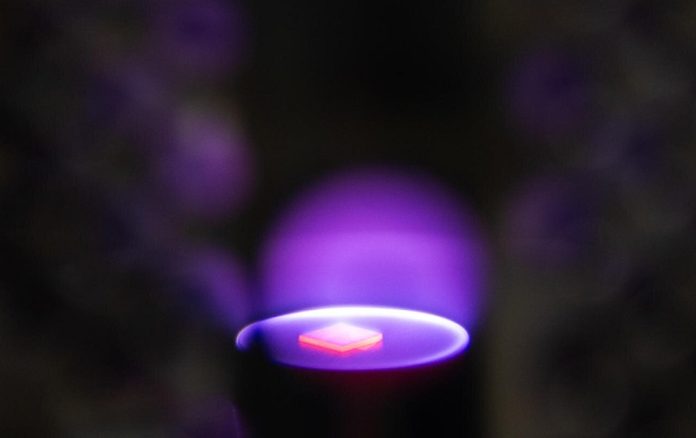
Researchers are making exciting progress in developing lab-grown diamonds specifically for advanced electronics, quantum sensors, and high-tech devices.
Unlike diamonds used in jewelry, these diamonds could play a critical role in future computers, optics, and sensors, thanks to their unique properties.
They can handle high electrical voltages and effectively dissipate heat, making them ideal for the semiconductor industry.
Scientists at the U.S. Department of Energy’s Princeton Plasma Physics Laboratory (PPPL) and Princeton University are exploring ways to grow high-quality diamond at lower temperatures.
Traditional diamond-growing techniques use extreme heat, which isn’t compatible with sensitive electronics.
Lowering the temperature could allow diamonds to be incorporated into silicon-based computer chips, potentially revolutionizing the microelectronics industry.
The team’s research, led by PPPL’s Yuri Barsukov, focuses on a process called plasma-enhanced chemical vapor deposition, which uses acetylene gas to grow diamond.
However, acetylene can also produce unwanted carbon soot that clings to diamond and reduces its performance. Barsukov and his team discovered a “critical temperature” threshold.
Above this temperature, acetylene promotes diamond growth; below it, it mainly creates soot. This insight could help scientists improve diamond quality by optimizing the acetylene concentration and atomic hydrogen levels near the diamond surface.
Another aspect of this research is focused on creating “quantum diamond,” a unique form of diamond designed for quantum computing and sensing applications.
Quantum diamonds contain special structures called nitrogen-vacancy (NV) centers. By removing a carbon atom and adding a nitrogen atom nearby, NV centers allow the diamond to store and transmit quantum information.
Unlike ordinary bits in computers, quantum bits, or qubits, can hold much more information, making them valuable for secure communications and highly accurate sensing.
Growing quantum diamond also requires an even layer of hydrogen atoms on the surface. This hydrogen layer makes the diamond surface conductive and acts as a foundation for adding other molecules.
However, attaching hydrogen atoms without damaging the NV centers has proven challenging, especially with traditional methods involving high-temperature hydrogen plasma.
The researchers tested two alternative methods for hydrogenating diamond: forming gas annealing and cold plasma termination. Forming gas annealing uses a mix of hydrogen and nitrogen gas, while cold plasma termination involves hydrogen plasma but avoids direct heating. Both methods successfully created conductive hydrogen layers, although each had unique trade-offs.
The forming gas annealing method provided high-quality hydrogen layers, but required very pure conditions to prevent any oxygen from affecting the diamond’s surface. Oxygen contamination can reduce the layer’s quality, requiring temperatures as high as 900°C to remove it effectively.
Cold plasma termination, on the other hand, allowed for a hydrogen layer without the need for intense heat, protecting the NV centers. However, the resulting hydrogen layer wasn’t as high-quality as that made with forming gas annealing.
To test how these methods affected NV centers, the team used photoluminescence spectroscopy, a technique that makes the NV centers glow under green light. Both alternative methods preserved the NV centers’ glow, while traditional high-temperature plasma damaged nearly half of them, making it clear that gentler methods are crucial for quantum applications.
The researchers hope to create a “recipe book” to guide the optimal hydrogenation of diamond surfaces for different applications. Daniel McCloskey, a lead researcher on the project, explained that reliable methods for producing hydrogenated diamond surfaces will support diverse uses, from quantum computing to biomolecular sensing. Some projects will need a perfect hydrogen layer, while others may build more complex layers with additional elements.
As researchers continue to explore ways to grow and prepare diamond for high-tech applications, lab-grown diamonds are emerging as essential tools for the future of electronics, quantum technology, and precise sensing, potentially transforming many fields with their unique capabilities.



